Bee Pollen is considered one of nature's most completely nourishing foods as it contains nearly all nutrients required by humans.
Bee-gathered pollens are rich in proteins (approximately 40% protein), amino acids, vitamins, including B-complex, and folic acid. Bee pollen is more rich in proteins than any animal source. It contains more amino acids than beef, eggs, or cheese of equal weight. About half of its protein is in the form of free amino acids that are ready to be used directly by the body.
The percentage of its rejuvenating elements remarkably exceeds those present in brewer's yeast and wheat germ. Bee pollen corrects the deficient or unbalanced diet common in today's civilization of consuming incomplete foods, often with added chemical ingredients, which expose us to physiological problems as various as they are numerous.
One of the most interesting facts about bee pollen is that it cannot be synthesized in a laboratory. Whenever researchers try to feed a bee with manmade pollen, the bee dies even though all the known nutrients are present in the lab-produced synthesized food. Many thousands of chemical analyses of bee pollen have been made with the very latest diagnostic equipment, but there are still some elements present in bee pollen that science cannot identify. The bees add some mysterious "extra" of their own. These unidentifiable elements may very well be the reason bee pollen works so spectacularly against so many diverse conditions of ill health.
It is important to recognize that a one teaspoon dose of pollen takes one bee working eight hours a day for one month to gather. Each bee pollen pellet, contains over two million flower pollen grains and one teaspoonful contains over 2.5 billion grains of flower pollen.
PROPERTIES AND NUTRITION1. Energy Enhancer - The range of nutrients found within bee pollen makes it a great natural energizer. The carbohydrates, protein and B vitamins can help keep you going all day by enhancing stamina and fighting off fatigue. 2. Skin Soother - Bee pollen is often used in topical products that aim to treat inflammatory conditions and common skin irritations like psoriasis or eczema. The amino acids and vitamins protect the skin and aid the regeneration of cells. 3. Respiratory System - Bee pollen contains a high quantity of antioxidants that may have an anti-inflammatory effect on the tissues of the lungs, preventing the onset of asthma.4. Treating Allergies – Pollen reduces the presence of histamine, ameliorating many allergies. Dr. Leo Conway, M.D of Denver Colorado, reported that 94 percent of his patients were completely free from allergy symptoms once treated with oral feeding of pollen. Everything from asthma to allergies to sinus problems were cleared, confirming that bee pollen is wonderfully effective against a wide range of respiratory diseases.5. Digestive System - In addition to healthful vitamins, minerals and protein, bee pollen contains enzymes that can aid in digestion. Enzymes assist your body in getting all the nutrients you need from the food that you eat.6. Immune System Booster - Pollen is good for the intestinal flora and thereby supports the immune system. According to holistic health expert Dr. Joseph Mercola, bee pollen has antibiotic-type properties that can help protect the body from contracting viruses. It's also rich in antioxidants that protect the cells from the damaging oxidation of free radicals. 7. Treats Addictions – Used holistically for healing addictions and inhibiting cravings by suppressing impulses. Because bee pollen crashes cravings, it is a very useful research is needed into this benefit, particularly when it comes to weight management. 8. Supports the Cardiovascular System - Bee Pollen contains large amounts of Rutin; an antioxidant bioflavonoid that helps strengthen capillaries, blood vessels, assists with circulatory problems and corrects cholesterol levels. Its potent anti-clotting powers could help prevent heart attack and stroke.9. Prostate Aid - Men who suffer from benign prostate hyperplasia can find relief by using bee pollen. Bee pollen can help reduce inflammation to stop frequent urges to urinate. 10. Infertility Problems - Bee pollen stimulates and restores ovarian function, therefore may be used to assist in accelerating pregnancy. As well as being a hormonal booster it is also a great aphrodisiac!
Wednesday, 19 August 2015
Tuesday, 31 March 2015
Truffle: history and health benefits
Truffle (family Tuber) is a rare type of mushroom that grows naturally under the soil next to the roots of certain trees or shrubs, especially oaks and holm oaks, where they establish a symbiotic relationship with the plant.
Truffle is a highly prized and sought after culinary delicacy. Its typical smell, both penetrating and persistent, develops only when it is completely ripe in order to attract wild animals such as boars, foxes and badgers: these animals, while digging in the ground, help spread its spores that are essential to perpetuate the species.
HISTORY
The earliest records of truffles appear in the Naturalis Historia, an early encyclopedia published circa
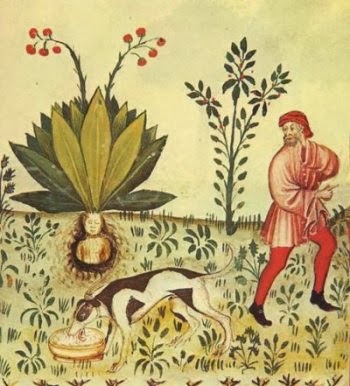
AD 77–79 by the Roman author Pliny the Elder. At that time it was a common idea that this precious fungus was born from the combined action of water, heat and lightning and it became part of mythology: the poet Juvenal explained that its origin is due to a thunderbolt hurled by Jupiter in the vicinity of an oak tree (a tree that was considered sacred to the father of the gods). As Jupiter was also famous for his prodigious sexual activity, truffle has always been appreciated throughout history for aphrodisiac qualities.
From a book written during the Italian Renaissance period called Opusculus de Tuberis (1564) we learn that truffle has always been a highly valued food that was consumed on the tables of noble Italian families. For some, its aroma was a kind of "fifth essence" that caused an ecstatic effect on the human mind.
PRODUCTION

Truffles are relatively rare, their growth is dependent on seasonal factors as well as environmental. The production quantity is different each year and only the expert truffle hunters are able to “read” the environment to understand when the time is right and where to find them.
Italy is one of the world's largest producers and exporters of truffles. Across the peninsula you can find all species of truffle used in cooking which are collected exclusively by trained dogs. These dogs work together with a truffle hunter who trains them on how to find these special tuberi. At the same time he passes down this tradition to the younger generations of truffle hunters. The use of pigs has been completely abandoned in Italy and it is even forbidden by law since 1985. In fact these animals could damage the soil and, because they are hard to train, they may bite or eat the truffles, yet they are still widely used in other countries. The same law issued in 1985 forbids the use of tools to dig the ground, as they are very likely to destroy the delicate balance of the soil and ruin the roots.
BENEFIC PROPERTIES
Recent scientific studies have proven the many beneficial properties of truffle: it is rich in antioxidants that fight free radicals, it helps to brighten the skin and to fight stains that form with aging thanks to an enzyme that regulates the production of melanin.
Truffle is also rich in essential amino acids, proteins and minerals that have scientifically proven effects in soothing and regenerating stressed skin. Truffle was indeed used for beauty treatment since old times, but following the most recent scientific studies its esthetic use is growing steadily and truffle cosmetics are becoming increasingly more popular.
Furthermore, it appears that the truffle has also an antidepressant action. Charles Cinnamon, president of the National Research Institute for Food and Nutrition, explains that this type of effect comes from our sense of smell when we allow ourselves a dish made with truffle because its strong scent stimulates the production of endorphins. Ultimately, the odorous component is the one that triggers the mechanisms of good humor. This ingredient can turn a simple fried egg or pork chop into a gourmet delicacy, a culinary experience which peaks with our sense of smell.
MOST COMMON TYPES OF TRUFFLE
Europe appears to have the most phylogenetic diversity of Tuber, particularly represented by basal lineages, suggesting that this continent may be the point of origin for the genus. Some of the most common are as follows:
Summer Black Truffle (Tuber Aestivum)
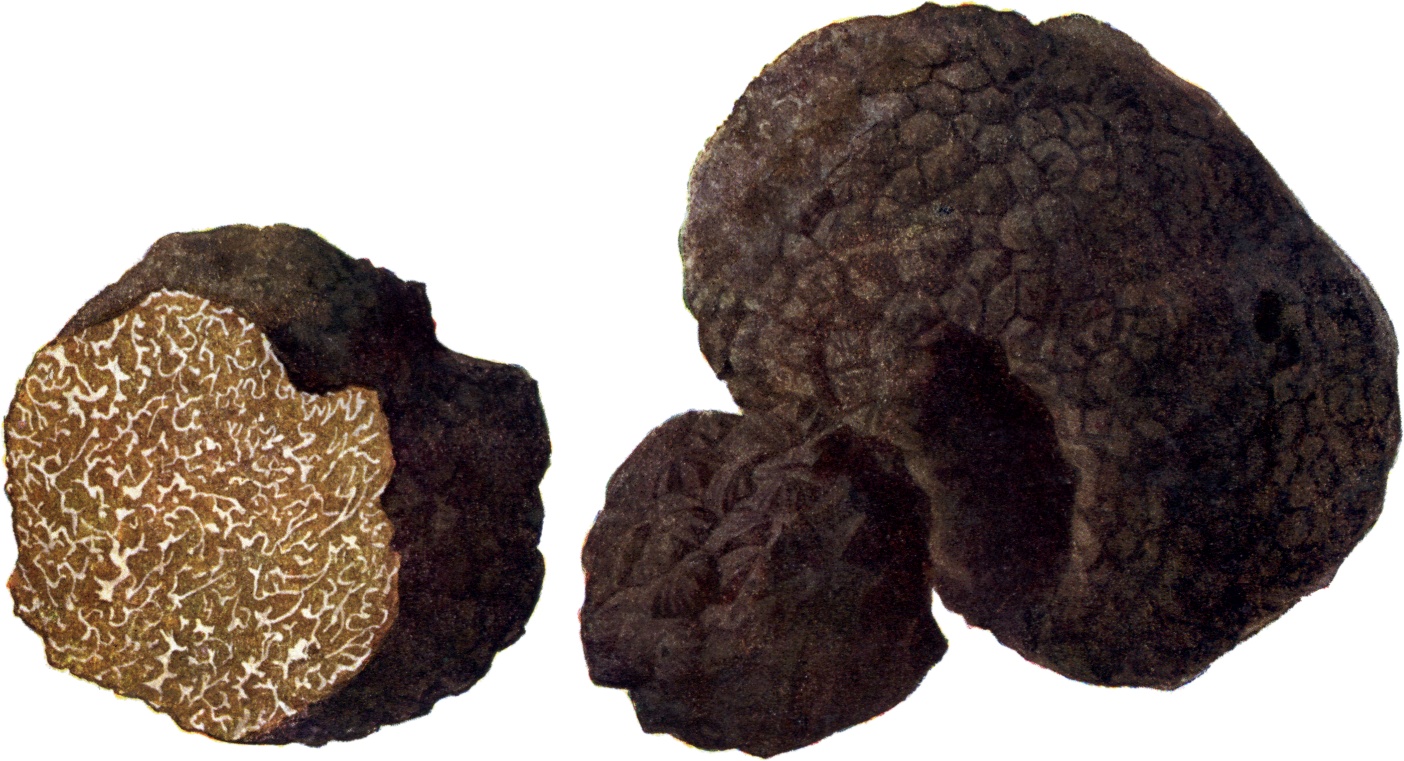
Aroma intensity is medium. The flavour of summer black truffle has a predominantly strong creamy-fruity apricot, malty-nutty aroma with a moderate savoury earthy quality, without any musky notes. It is delicate and pleasant, like roasted malt and slightly seaweed, fuller flavoured than the scorzone black, without the smoky note of the autumn black. Young specimens smell like peanuts, becoming woody-nuttier as they mature. The flavour is enhanced when stored in an enclosed container.
White Truffle (Tuber Magnatum Pico)
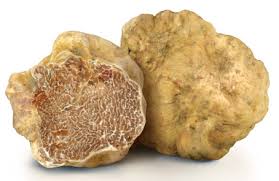
Mostly found in Italy, its aroma intensity is very strong. The flavour of winter white truffle has a rich and complex combination of ethereal creamy sweet with nutty-cocoa and distinct green aroma with a pronounced savoury quality dominated by a garlicky note blended with earthy asparagus and cabbage, and modified by musky-spicy note. It is penetrating and the distinctive meaty alliaceous-garlic note is unmistakable. The winter white aroma is the most pleasant and unique among truffles. Specimens that grow in contact with oak trees have the most persistent (long-lasting) aroma, and with hazel trees, the most intense (strong-smelling).
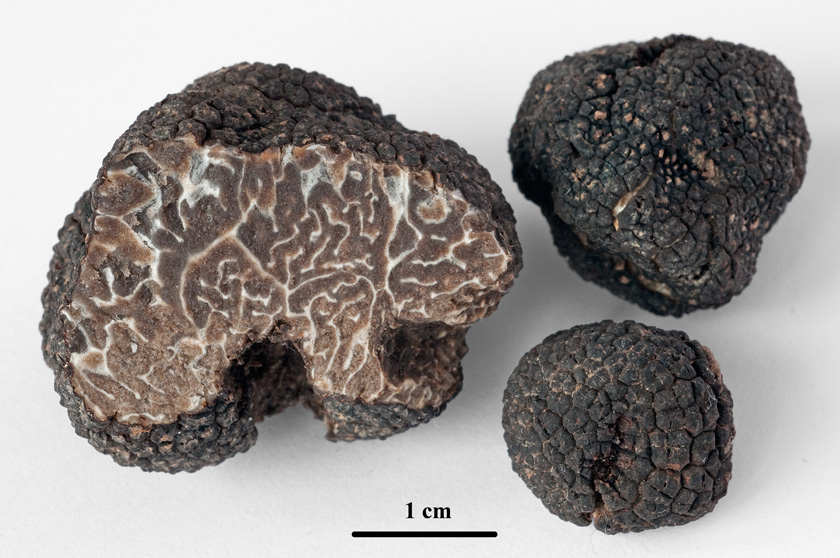
Muscat Black Truffle (Tuber Brumale)
Aroma intensity is medium. The flavour of muscat black truffle has a pronounced sweet ethereal fruity-berry, grape-like aroma with a milder savoury asparagus-turnip and only lightly musky-spicy nutmeg quality. It is distinctive and pleasant, similar to that of the autumn black but more distinctive and less persistent than that of the winter black, and not as pleasant.
Winter Black Truffle (Tuber Melanosporum)
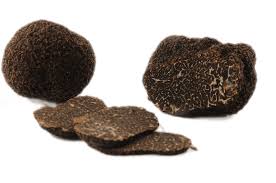
The Winter Black Truffle is highly sought after for its subtle aroma described as mixture of “chocolate and earth”. Aroma intensity is very strong. The flavour of winter black truffle has a rich and complex combination of pronounced ethereal sweet fruity almost strawberry and malty-nutty like cream corn, slightly spicy, burnt coffee-cocoa aroma with a milder savoury-musky earthy asparagus quality. It is persistent, distinctive, surprisingly variable and very pleasant; less pungent and more delicately sweet-spicy and overall milder than the winter white. Its fruity aroma reminiscent of wild strawberries is quite characteristic.
The truth behind commercial Extra Virgin Olive Oils
Just like wines, so many bottles of Extra Virgin Olive Oils are filling the supermarkets making it harder and harder for us to choose the right one, We feel lost in a new world of claims and labels, all we know is that we are supposed to choose a "cold pressed" oil because heat destroys the benefic properties that make extra virgin olive oil one of the healthiest ingredients in our kitchen and also a beauty product.

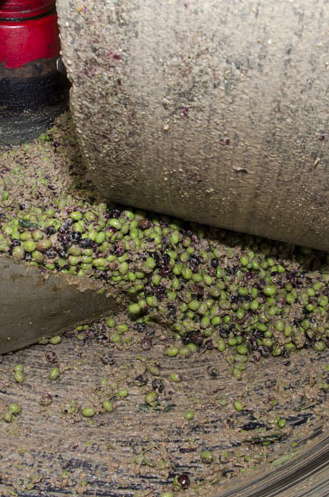
But what does "cold press" really refer to?
The Englih "cold pressed" is sometimes used to translate 2 different working methods: "spremuto a freddo" and "estratto a freddo" (cold pressed and cold extracted), which represent the continuous process and the traditional process.
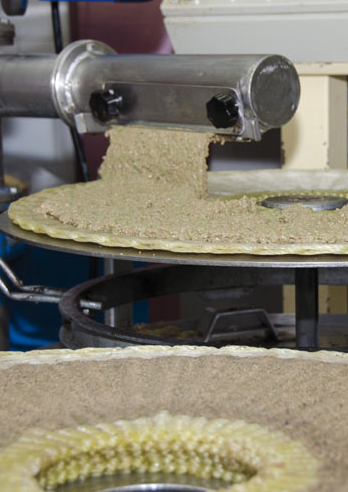
Traditional Process: Olives, after washing, are ground through millstones and squashed by presses. The pressing produces an oily must composed by vegetation water and Olive Oil. This oily must is sent to the separator that splits the lighter Olive Oil from the heavier vegetation water.
In this method, Olive Oil is produced by squeezing out/pressing and there aren’t stages that heat the olives. This process is very expensive and relies on the producers unique craftsmanship.
Modern Industrial/Continuous Process: after washing, Olives are ground through hammering. Then they are not squashed but centrifuged through extraction method. This extraction produces an oily must that is then sent to the separator.
In this method, Olive Oil is obtained by extraction/centrifugation and not by squeezing out.
According to law, the first production method can be labelled as "spremuto a freddo/cold pressed", while the second can be labelled as "estratto a freddo/cold extracted".
On many foreign labels instead there is usually only written COLD PRESSED, even when the oil comes from a COLD EXTRACTED method, thus creating a lot of confusion about the quality.
If You want to know the real quality of an Extra Virgin Olive Oil, You should ask the manufacturer to show you their Italian label.
Many oils are not cheap, make sure that you get what you want and that the money is well spent on a superior product.
But what is more important is that oil is commonly used raw as a finishing product or as a dressing, and it we can benefit of all its nutritional qualities only if consumed cold.
Unfortunately the traditional process is doomed to disappear as it expensive and it requires so much more manpower. Yet these producers are still able to conquer the trust of clients who are passionate about tradition.
Unfortunately the traditional process is doomed to disappear as it expensive and it requires so much more manpower. Yet these producers are still able to conquer the trust of clients who are passionate about tradition.
Read more: www.gabrielloni.it
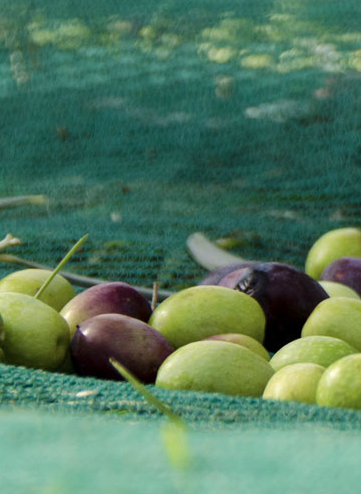
Brief history of Honey Wine, the "drink of the gods"
Mead, commonly called "Nectar of the gods" or "Drink of Love", is the ancestor of all fermented beverages.

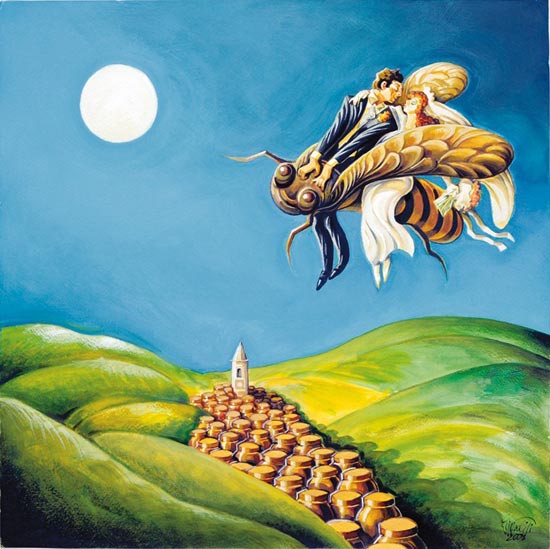
Simply made of honey, water and yeast, "honey wine" has been renowned as an 'aphrodisiac' and the word "honeymoon" is believed to be derived from the ancient European custom of having newly-weds drink mead for a whole moon (month) in order to increase their fertility and therefore their chances of a happy and fulfilled marriage. Mead is also taken as a health tonic drink as it has a good level of antioxidants.
If wine has been part of human culture for 6,000 years, the history of mead dates back 20,000 to 40,000 years and has its origins on the African continent, where we have the first evidence of man's knowledge of this natural fermented nectar. As nomadic peoples wandered out of Africa and into the Mediterranean they took with them bees, honey and, unknowingingly, osmotolerant yeasts, that were also responsible for the fermentation of wine grapes - a practice which started in the Mediterranean some 14,000 to 34,000 years later.
Eventually mead making became well known in Europe, India and China, but it died out as people became
Eventually mead making became well known in Europe, India and China, but it died out as people became
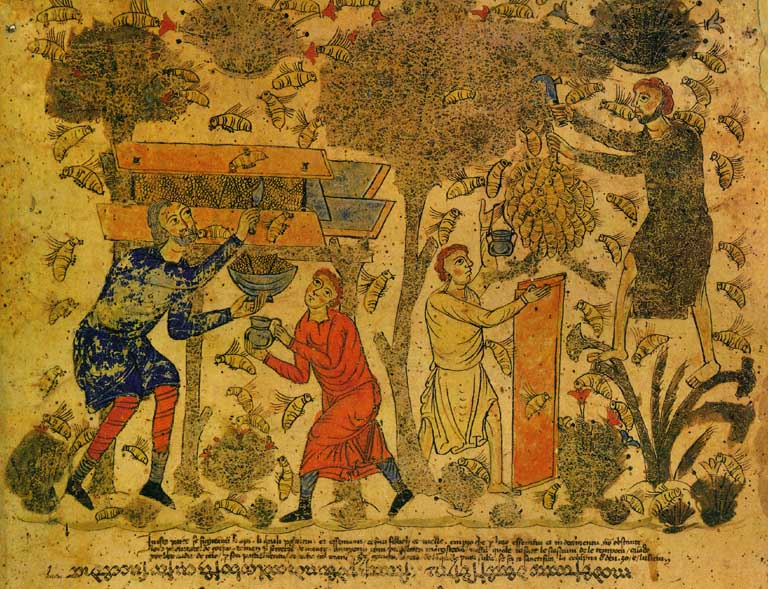
urbanized and honey was replaced by sugar cane.
This happened 1700 years ago in India, 1500 years ago in China and about 500 years ago in Europe. Honey was prized throughout history, it was often available only to royalty. Somewhere about 1300 A.D., the Italian voyager Marco Polo (1254-1324) returned from the Spice Islands with sugar cane. This inexpensive source of sugar became dominant and honey went underground. The tradition of mead was sustained in the monasteries of Europe where the need for ceremonial candles made of beeswax necessitated managed bee colonies and surplus honey was used to make mead.
Prior to the mechanized extraction of honey in 1865, the honeycombs were simply crushed to remove the honey. This left loads of honey laden, crushed beeswax which could most easily be processed by rinsing the honey out of the wax with warm water. And what became of the honey water? Mead, of course. Mechanized extraction meant less left over comb and less honey water for mead making and a general decline in the craft.
Since the mid 1800’s mead making has survived as an artisan craft, and today it still is. In recent years it is being rediscovered thanks to its health and tonic benefits, and for its sweet pleasant taste which is a good alternative to southern Italy's sweet Passito wines. It is ideally to be enjoyed with cheese and dry biscuits after dinner. It makes for a perfect dessert wine.
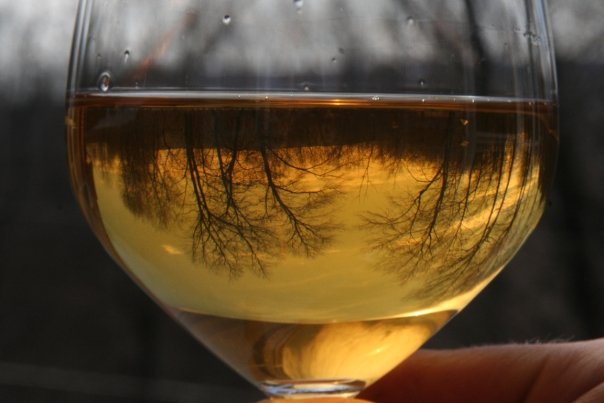
Bergamot, a unique gift of Nature
Some may say that Bergamots are a mistake of nature, but so far they have been a blessing. Easily confused for an orange or a big lemon, Bergamot is usually not eaten but used to extract a precious essential oil from its skin.
Not much is known about this fruit, not the etymology of the name nor its botanical origin: in fact if you plant a bergamot seed, the plant that grows is not bergamot but wild orange. Many believe that bergamot is a natural mutation of an orange, but so far nobody could tell when and how this happened. What is clear is that bergamots were born and flourished only along the southern Calabria coast, especially along the Ionian sea, where we find 90% of the world’s bergamots. Many tried to introduce it in other countries in Europe, Asia, Australia and America, such as Japan, Spain, Greece, Israel, but so far the only country with a micro-climate similar to Calabria’s was found only in Ivory Coast and a few small areas of Brazil.
Its essential oil is made of 350 different elements, many more than any other similar fruit. Its history is linked to its unique olfactory and chemical characteristics, in fact Bergamot oil’s fortune mainly depends on its ability to blend and enhance every other scents in a perfume. A natural oil with the same characteristic can only be found in cetaceans.

The first producers understood that by pressing bergamot skin on a sponge you could extract a beautifully scented oil with antiseptic properties. At the beginning it was used in the local medicine, and only in 1709 a perfume maker used it to create the first ever “Eau de Cologne”. From that moment the use of bergamot oil became almost exclusive to the cosmetic industry.
But at the end of the 18th century the first bergamot sweets started to be produced, especially in Nancy, France. It was the beginning of a new era. After only a few decades an owner of tea plantations in India, Sir Grey, had the idea to add it to tea leaves, and so the world-famous Earl Grey Tea was born.
This golden era of bergamot unfortunately met an end in the 20th century when a cheaper chemical version was invented. Many bergamot gardens disappeared and the local communities almost forgot how precious this fruit is.
But in today’s world there is a growing concern about the environment and the products that we use, and more and more people decide to avoid chemical products for more natural alternatives. This global tendency resulted in a re-discovery of traditional products and a strong appreciation for small-business that produce in a natural way. Because of this, the Calabrian communities decided to revive the bergamot gardens left and extend its production, and even the European Union decided to safeguard it by awarding this fruit with the mark of POD (Protected Origin). Some are even asking for these few gardens left to be included in the UNESCO world heritage.
Today, bergamot is still one of the most appreciated components for perfumes and cosmetics, its oil is used in aromatheraphy for its soothing and antidepressant qualities, its scent is sought after by creative chefs worldwide and it is contained in a growing number of liquors and food products such as biscuits, gelato, chocolate or mayonnaise.
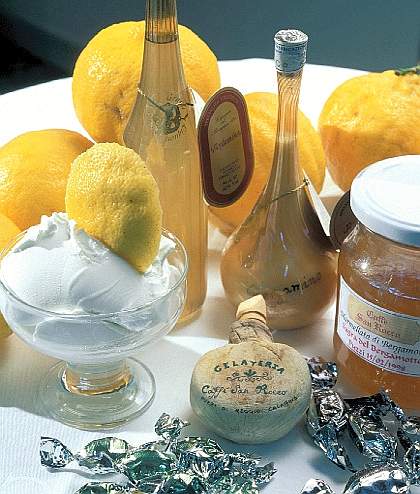
Blueberry vs Bilberry: what's the difference?
They look similar, and they taste similar, we are usually confused and call them with the generic name
"blueberries", no matter if we mean the bilberry (European blueberry) Vaccinium myrtillus or the American blueberries, but there are actually some important differences in the nutritional value and the way they grow. Let's find out more!
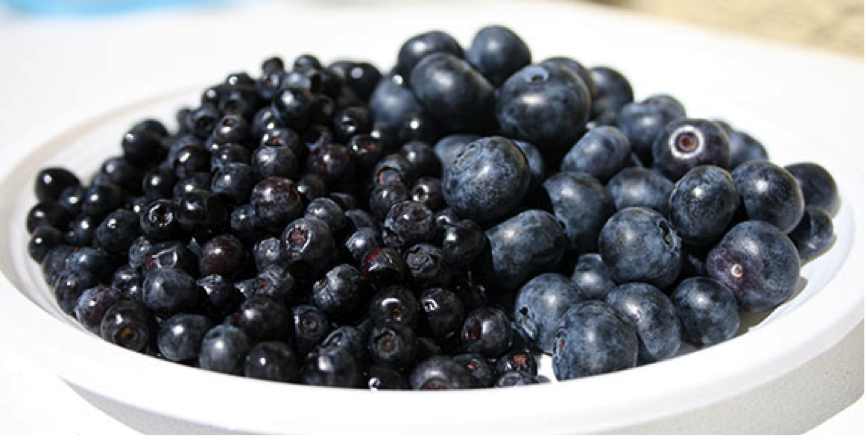
Bilberries and blueberries are both known for having positive effects on human health and for being high in antioxidants and anthocyanins. However, wild bilberries typically contain these compounds at much higher levels -- up to four times higher, more than any other berry. According to HealWithFood.org, eating blueberries or bilberries regularly can be a good way to keep your skin healthy, prevent acne and even reduce the risk of varicose veins.
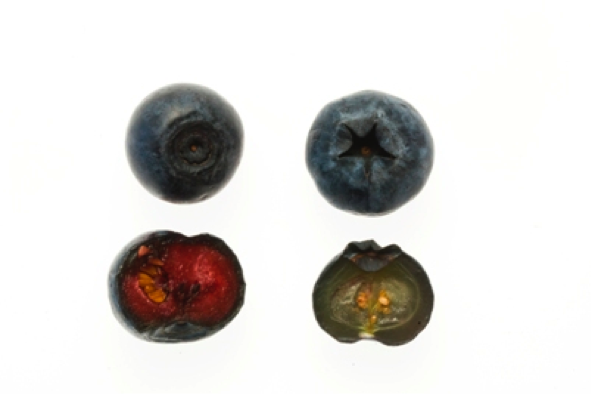
Bilberries have dark red, strongly fragrant flesh and red juice that turns blue in basic environments, they can stain hands, teeth and tongue deep blue or purple while eating: blueberries have white or translucent, mildly fragrant flesh. When cooked as a dessert, bilberries have a much stronger and fuller taste, and a rougher texture than blueberries
Bilberries are usually harvested from wild plants, while blueberries are usually cultivated and are widely available commercially.
The wild Bilberry plants are very delicate, the fruits can only be picked manually because machines would harm them. Especially in protected areas, such as the northern Apennine Mountains (one of the largest growth areas in Europe), the use of machinery is forbidden by law, as the local authorities have recognized the importance of this tiny superfood for the local economy.
Unfortunately we can't find bilberries in the supermarket. As representative of the "slow food movement", these berries are available fresh only in the growth areas of the world, shipping them would be far too expensive. Despite being largely present in Health Stores as concentrates, they are now also available as juices, syrups or jams.
Green Gold: Pistachios from Bronte, Sicily.
The particular type of tree that produces the pistachios for which Bronte is so famous is not only restricted to the village of Bronte and its surrounding countryside, but it is also only able to grow on lava rocks from Volcano Aetna. That’s right, these trees will only grown on lava rock from Bronte. People have tried to plant the trees somewhere else, on dirt, on other kinds of lava rocks, on lava rocks from Aetna but moved to another place…all of these attempts failed.
Moreover, the specific botanical species of pistachio that is produced in Bronte, the Pistacia vera, is the only type that can be used in the preparation of any kind of sweets. Indeed, Bronte’s pistachios are almost never salted and eaten as you are probably used to eating other types of nuts
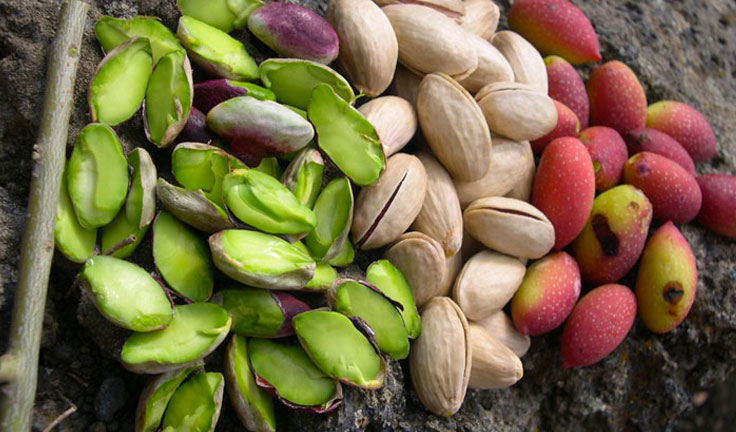
Pistachios from Bronte are very distinct from the pistachios most people are used to. The first thing that catches the eye is their bright green color. Especially immediately after the pistachios are picked from their tree, their color is so intense and bright that you’ll think you are holding a tiny green light bulb in your hands. The fruit itself is a little smaller and more tapered than other varieties. The small green kernel is covered by a purple velvet-like peel; the peel can be either eaten or removed. Peeling Bronte pistachios is actually quite challenging; if the fruit is fresh and you are extremely patient, though, you’ll be rewarded.
When the fruit is ripe, the shell spontaneously opens up and exposes the tip of the pistachio nut. Outside the shell, there is the husk, or grolla as it is called in Brontese dialect, a leathery coat that changes color from red to pink to white, as the fruit matures. The grolla is the most scented part of the fruit. The aroma of the husk is so strong and penetrating that even the husk of a couple of pistachios is enough to infuse an entire room with the scent of pistachio.
Even for people not at all interested in anything having to do with trees or plants, it’s actually quite an amazing experience to see these pistachio trees. They seem to be crawling out of the lava, with their branches that look like arms pulling themselves out of the rocks.
Starting from this almost mystical environment, so many small Italian producers are using Bronte's pistachios to create always new products: sauces, sweet spreads, cheese, chocolate, candies etc. You can check our website to dins out what pistachio products we are importing right now.
Subscribe to:
Comments (Atom)
